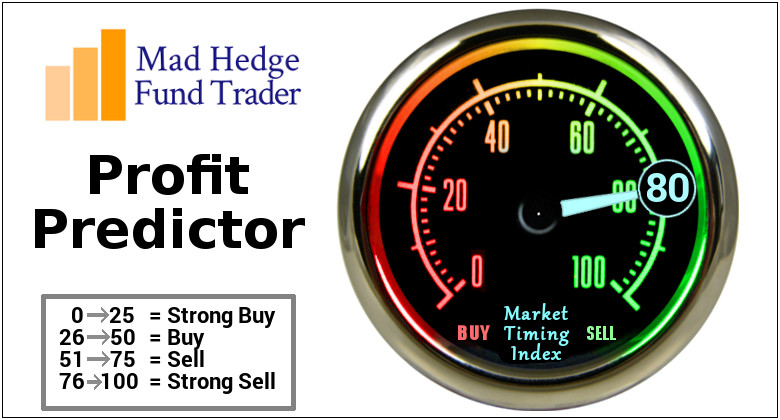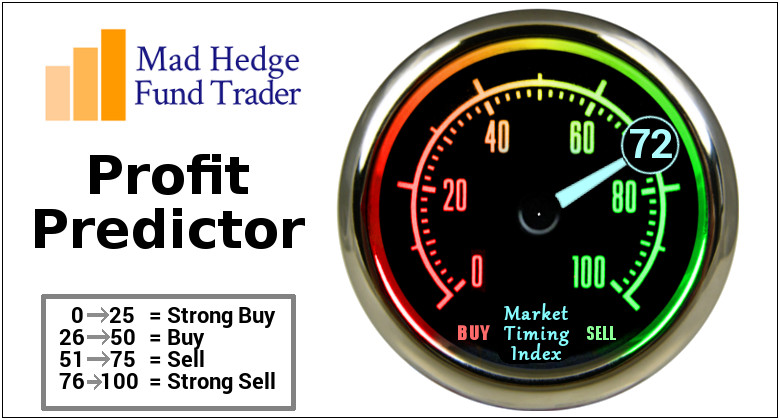While the Global Trading Dispatch focuses on investment over a one week to six-month time frame, Mad Options Trader, provided by Matt Buckley, will focus primarily on the weekly US equity options expirations, with the goal of making profits at all times. Read more
While the Diary of a Mad Hedge Fund Trader focuses on investment over a one week to six-month time frame, Mad Day Trader, provided by Bill Davis, will exploit money-making opportunities over a brief ten minute to three day window. It is ideally suited for day traders, but can also be used by long-term investors to improve market timing for entry and exit points. Read more
Global Market Comments
January 22, 2018
Fiat Lux
Featured Trade:
(MARKET OUTLOOK FOR THE WEEK AHEAD, or CLOSED FOR BUSINESS),
(SPY), (TLT), (TBT), (GLD), (AAPL), (FB),
(BUSINESS IS BOOMING AT THE MONEY PRINTERS)
(TESTIMONIAL)

There is nothing quite like selling short sovereign bonds and then seeing the country in question go into default.
That was a big trade during the 1970's and 1980's, when after two oil shocks the credit worthiness of emerging nations went into a tailspin. I think I made three round trips on Brazil alone.
However, this time the sovereign in question is the United States of America. The government shut down that ensued on Friday triggers a de facto default on all its IOU's.
As a result, US Government bond prices have sold off sharply, taking yields on the ten-year Treasury bond from 2.44% to 2.64%, a four-year high.
The charts on bond prices couldn't look uglier, with many important long-term trend lines shattered. The double top is bleakly staring you in the face.
If you happen to be a coupon cutter not to worry. The Treasury has enough cash in the pipeline to keep up interest payments for at least a month.
And there is a silver lining behind the giant black clouds roiling over Washington. If you are being audited by the IRS this week the meeting is cancelled. Agents won't show if there's no money to pay them.
Such is trading and investing in the modern age, which seems to change by the day. Governments were never really all that reliable anyway; here today, gone tomorrow.
One of my 2018 forecasts has already played out. A Bitcoin crash would lead to a major rally in gold. That is exactly what has happened, with the crypto currency down an amazing 55% from its December high.
The barbarous relic popped smartly, some 8.54%. Is this the beginning of its long-awaited run to the old high at $1,928? We shall see.
After a slow start, no doubt the after effects of the Chicago winter, it's off to the races again with the Mad Hedge Fund Trader's Trade Alert Service.
At the Friday close we were up 3.1% so far in 2018, and boast a trailing 12 month profit of 58.68%, thanks to longs in Apple (AAPL) and Facebook (FB) and a short in Treasury bonds (TLT).
It hasn't been an easy market to get into. You essentially had to close your eyes and BUY. I sold into a brief short covering rally in bonds because they were so obviously falling apart.
I picked up the first of my long's during the 300 point dump triggered by the Steve Bannon subpoena. So far, I'm batting 100% in 2018.
This week will be all about housing data, which we already know are hotter than hot. Then there's the all-important Q4 GDP data on Friday. You'll have to count on individual company earnings reports as the wellspring of any volatility.
We are now into Q4 earnings season so those should be the dominant data points of the coming weeks.
On Monday, January 22, at 8:30 AM, the week kicks off with the December Chicago Fed National Activity Index, a leading indicator of inflation. Haliburton (HAL) announces Q4 earnings.
On Tuesday, January 23 at 10:00 AM EST the December Richmond Fed Manufacturing Index, a read on southern business activity. Johnson & Johnson (JNJ) announces earnings.
On Wednesday, January 24, at 10:00 AM EST, we obtain December Existing Home Sales. Ford Motors (F) announces earnings.
Thursday, January 25 leads with the 8:30 EST release of the Weekly Jobless Claims. At 10:00 AM December New Homes Sales are announced. The weekly EIA Petroleum Status Report is out at 11:00 AM EST. Celgene (CELG) announces earnings.
On Friday, January 26 at 8:30 AM we learn the first read on Q4 GDP, which should be very positive. Honeywell International (HON) announces earnings.
Then at 1:00 PM, we receive the Baker-Hughes Rig Count, which has started going ballistic.
As for me, I shall be flat on my back trying to recover from the flu. Yes, I am writing this letter in bed with a 103-degree fever watching the WWII movie Fury (my dad was a tanker).
Some 30 years of flu shots didn't do me any good this time, and 74 people in California have already died from this epidemic. However, as poorly as I may feel, the work schedule continues unabated. No rest for the wicked!
How about that (TLT) short!! It turns out that imminent government default on their bond obligations makes bond prices fold like a wet taco.







I'm happy to renew my subscription to The Mad Hedge Fund Trader. This current, very perplexing market demands a coach advising you on what it is doing.
If you do not step up to the plate and hit what is being pitched you will not succeed. The same is true with this market.
With a personal 35+ years of investing, some as a professional, I do not know of anyone that can interpret this confusing market better than John Thomas.
He has led me to some singles, occasional doubles and more than once led me to hit it right out of the park (+440% in the Jan FXE puts!).
The occasional high hard one coming straight at you can be painful, like with the (TBT), but it is all part of the game! You make nothing by sitting on the bench.
Keep them coming John.
Frank
West Chester, Pennsylvania

"An S&P 500 index fund never beats the index. There's fees, there's friction costs, and other costs involved," said Robert Reynolds, a manager at Putnam Investment Fund.

While the Diary of a Mad Hedge Fund Trader focuses on investment over a one week to six-month time frame, Mad Day Trader, provided by Bill Davis, will exploit money-making opportunities over a brief ten minute to three day window. It is ideally suited for day traders, but can also be used by long-term investors to improve market timing for entry and exit points. Read more
Global Market Comments
January 19, 2018
Fiat Lux
SPECIAL CLEVER OPTIONS TRADING ISSUE
Featured Trade:
(A CHEAP HEDGE FOR THIS MARKET),
(VIX), (VXX), (XIV), (SPY),
(HOW TO EXECUTE A VERTICAL BULL CALL SPREAD)
(FB),
(TESTIMONIAL)

The S&P 500 is now 5.66% above its 50-day moving average, the biggest gap in history, which itself is rising sharply.
So financial advisors, pension fund managers, and cautious individuals have been ringing me up asking what is the best way to hedge already heady 2018 gains.
You can forget about buying the Volatility Index (VIX), (VXX). The huge contango, the discount front month futures contracts have to far month ones, almost guarantees that your hedge will be enormously expensive and expire worthless before it has the chance to do any good.
If you don't believe me, check out the chart for the Velocity Shares Daily Inverse Short VIX ETN (XIV), which has gone ballistic since the last election, from $12 to $146, and is a bet on falling volatility.
No, there's a much better way to do this
Buy deep out-of-the-money, long dated S&P 500 (SPY) put options. You want to go deep out-of-the-money so your insurance policy is cheap.
You also want to go long dated, so time decay doesn't kill you and your option position lives long enough to do some good. By long dated I'm thinking five months out, like the June 15 2018 option expiration date.
All of this logic points to the (SPY) June 2018 $250 puts today priced at $2.50, which as of today are 10% out-of-the-money.
Here is the beauty of this position. A put option rises in value in falling markets. But so does option implied volatility, creating a leveraged hickey stick effect on the value of your put position. And deep out-of-the-money options always see implied volatilities rise much faster than near money ones.
You don't need the market to drop the full 10% to make enough profit on this position to offset losses elsewhere in your portfolio.
A much more likely 5% market correction would cause the value of the June 2018 $250 puts to jump from $2.50 to $4.10, a gain of 64%, as long as that drop happens soon. However, add in an expected pop in implied options volatility and the profit could be as much as 100%.
So how many June 2018 $250 puts should you buy?
Let's say you have a $100,000 portfolio. Only four put option contracts would provide enough coverage for your entire exposure ($100,000/100 shares per contract/$250 (SPY) strike price) = 4 contracts rounded off. Four contracts of the June 2018 $250 puts will cost you $1,000 (4 X 100 shares per contracts X $2.50).
In other words, $1,000 buys you an insurance policy on $100,000 portfolio exposure for five months. Sounds like a deal to me.
There are a few qualifications with such a simple hedge. Let's say that you read the Diary of a Mad Hedge Fund Trader and have a highly concentrated portfolio focused on technology, energy, financial, commodities, and industrials.
It such a case the tracking error between the (SPY) and your portfolio will be large (after all, that is the point), and you may not get all the downside protection you want.
On the other hand, what if we really get the 10% correction? What if the black swans suddenly land in flocks? In that case the value of your June 2018 $250 puts soars to at least $8.25, and more likely $12 when you add in the expected effects of rocketing implied volatilities. The value of your hedge rises to $4,800.
Yes, you don't get complete 1:1 coverage. But it's better than going into such a route naked, with no downside protection at all.
Let's say you're a cheapskate and you want your insurance policy for free. Yes, this can be done.
In addition to buying your June 2018 $250 puts, you also sell short an equal number of June 2018 $295 call options, which are 5% out-of-the- money. This gets you $740 in cash ($1.85 option cost X 100 X 4 contracts) which you can use to offset the cost of your June 2018 $250 puts.
The net cost of the five-month hedge then drops to only $260 ($1,000 - $740 = $260). This is what the pros do.
This kind of long put short covered call strategy is called a Collar, and is a classic risk control position used by big hedge funds.
Of course there is the risk that the market rises by more than 5% and your short call options get exercised against you. But if that happens you'll probably be too busy dancing in the street to notice, as your entire portfolio has just risen sharply in value.
There is another hedging strategy that is far easier to execute. Just take a long cruise around the world. That way, corrections will come and go and you might not even know about it, unless your butler brings you a copy of the Wall Street Journal every morning, as mine does.
This is the hedging strategy most of you have pursued for the past nine years and it has worked really well. At least you end up with a nice tan and some pleasant photos.
As for the June 2018 $250 puts they're most likely end up expiring worthless, but you'll sleep better at night. Such is the price of peace.




Correction? What Correction?
While the Diary of a Mad Hedge Fund Trader focuses on investment over a one week to six-month time frame, Mad Day Trader, provided by Bill Davis, will exploit money-making opportunities over a brief ten minute to three day window. It is ideally suited for day traders, but can also be used by long-term investors to improve market timing for entry and exit points. Read more
Legal Disclaimer
There is a very high degree of risk involved in trading. Past results are not indicative of future returns. MadHedgeFundTrader.com and all individuals affiliated with this site assume no responsibilities for your trading and investment results. The indicators, strategies, columns, articles and all other features are for educational purposes only and should not be construed as investment advice. Information for futures trading observations are obtained from sources believed to be reliable, but we do not warrant its completeness or accuracy, or warrant any results from the use of the information. Your use of the trading observations is entirely at your own risk and it is your sole responsibility to evaluate the accuracy, completeness and usefulness of the information. You must assess the risk of any trade with your broker and make your own independent decisions regarding any securities mentioned herein. Affiliates of MadHedgeFundTrader.com may have a position or effect transactions in the securities described herein (or options thereon) and/or otherwise employ trading strategies that may be consistent or inconsistent with the provided strategies.


